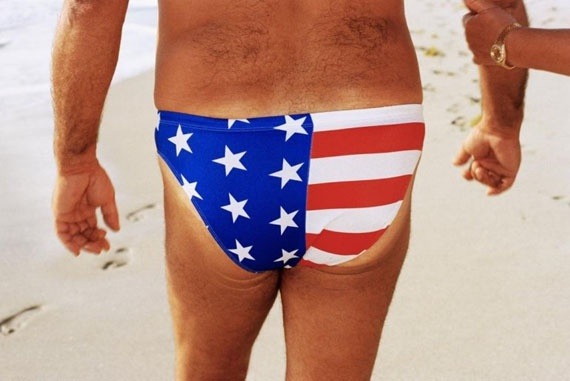
Joel asks, and adds:
I have looked at various outdoor clothing brands, but everything
has a million buckles and zippers. I just want a simple OCBD that will
keep me from getting melanoma! Any help?
As a pale male myself, Joel, I feel your pain. The good news is that most (not all?) clothing offers some measure of skin protection from the sun’s harmful rays, even a plain OCBD. And while the amount of protection a given item offers is hard to pin down specifically, the general protectiveness of a garment follows a pretty logical formula:
- Weave–Tighter weaves offer more protection than loose weaves. If you hold a fabric up to the light and can see through it, UV waves can probably get through. Slubby linen? Bad. Denim? Good.
- Color–White clothing is the least sun protective. Dyes help.
- Weight–Very generally, heavier weight fabric offers more protection.
- Fiber–Cotton is among the least protective textile components. Nylon and polyester are better in this case.
- Laundering–Laundering your clothing can increase protection, potentially because of laundry-related shrinkage, which can tighten up the weave of a fabric. Some laundry additives also claim to add sun protection to clothing that will last through multiple washes.
Naturally, it doesn’t help a LOT to know that wearing layers of dense, heavyweight clothing offers full sun protection, because you need full protection when it’s hot and your preferred number of layers would be zero. When you’re wearing one layer only, knowing the UPF rating of your clothing can help.
UPF-Rated Specialty Clothing
Manufacturers are becoming more likely to advertise a UPF number for their clothing. UPF is similar to the SPF you see on sunscreen bottles, but measures both UVA and UVB radiation: The number is the denominator in the fraction of the UV rays that pass through the fabric. That is, a UPF rating of 5 means 1/5 of UV rays pass through–not great. The Skin Cancer Foundation considers a UPF rating of 30-49 to offer very good protection, and 50+ excellent protection. For reference, a white cotton tshirt offers a UPF of 7, and less if it’s stretched or wet.
Unfortunately, as Joel has found, most companies that make UPF focused clothing are less focused on style. Outdoor gear companies are far more likely to specify UPF than, say, Brooks Brothers, who presumably assume you’re wearing their clothing under primarily fluorescent office lights. Some decent choices right now?
- Woolrich offers a simple short sleeve oxford with a UPF of 40.
- Outlier offers its Pivot shirt in a cotton blend with a UPF of 50+ (pretty good for a white shirt!)
- Filson offers a number of shirts with UPF 50+
Custom Options
Another (potentially more expensive and involved) option is finding UPF fabric in bulk and having your clothing custom made. According to Derek, depending on your size, you will need 1.5-2 yards of fabric (assuming it’s 59" in width) to make a shirt. Cottonwork and Proper Cloth are two good options for this sort of thing—and both will work with a customer’s fabric.
Of course, one of your best defenses against the sun is to wear a hat with a brim!
–Pete
Photo by Martin Parr.







